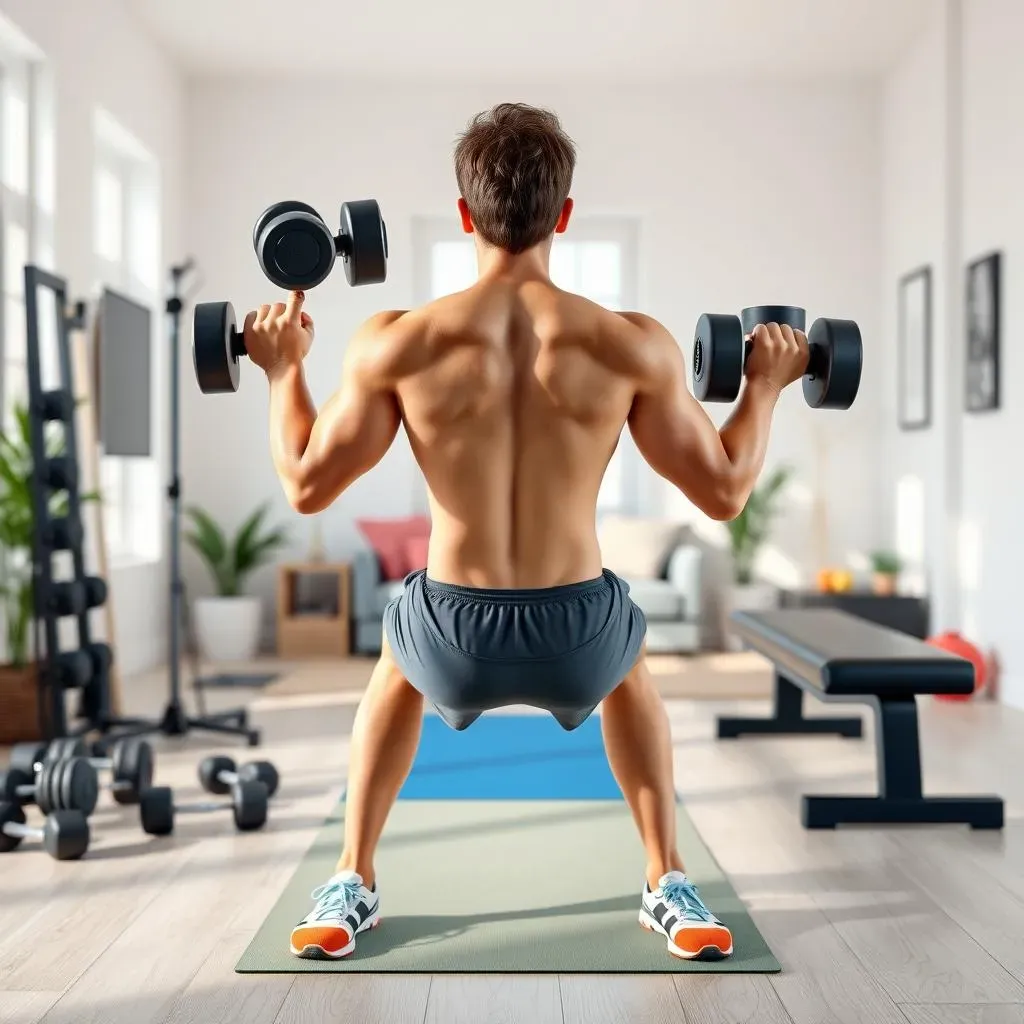Table of Contents
Ready to ditch the crowded gym and build serious strength at home? You're in the right place! This guide is all about "home workout equipment with dumbbells," your secret weapon for a killer workout. We're not just talking about bicep curls here; dumbbells can unlock a full-body transformation. From understanding different types of dumbbells, like adjustable and fixed weights, to figuring out what to look for when buying, I'll walk you through it all. We’ll explore how to use them effectively, hitting everything from arms and shoulders to legs and core. I'll even cover how to keep your gear in tip-top shape. Think of this as your personal roadmap to a stronger, healthier you, all from the comfort of your living room. Let's jump in and make some gains!
Dumbbell Types for Your Home Gym
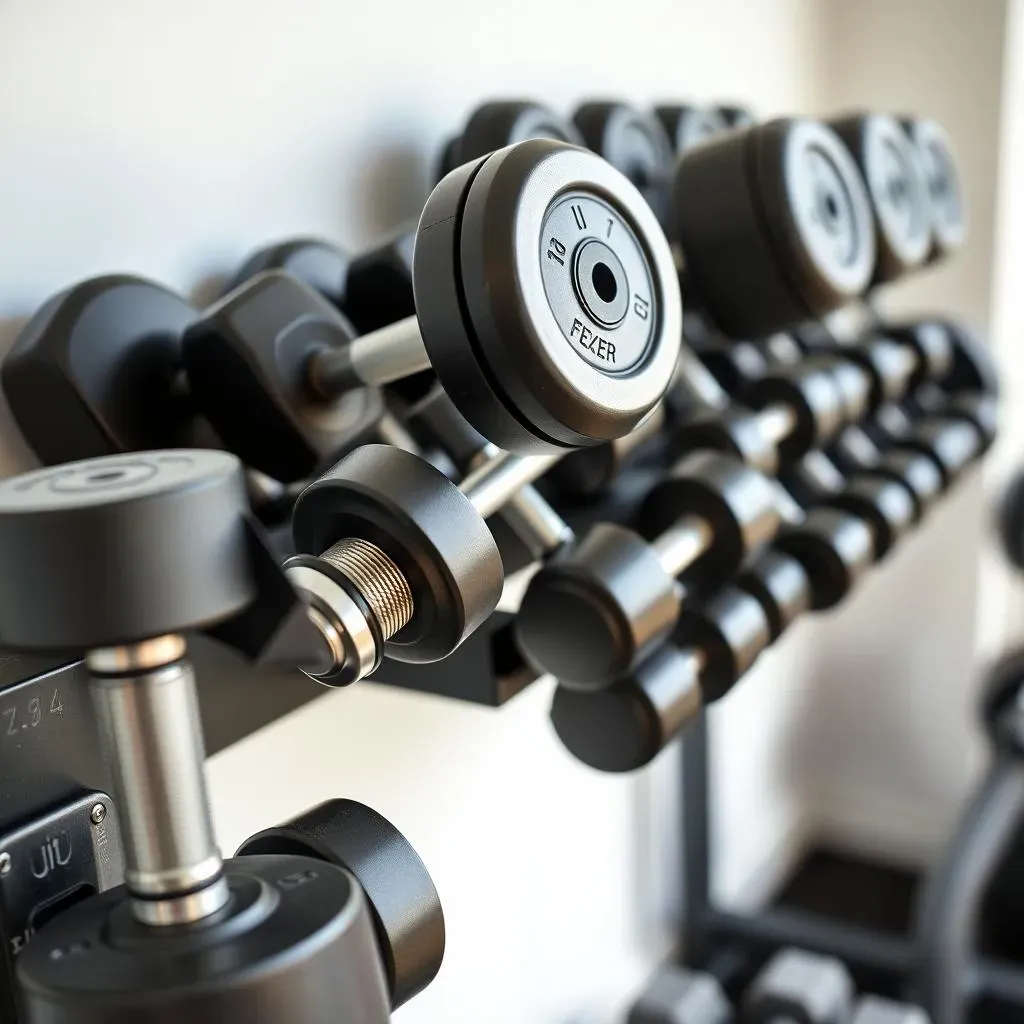
Dumbbell Types for Your Home Gym
Fixed Weight Dumbbells
Okay, let's talk dumbbells! First up, we have fixed weight dumbbells. These are your classic, no-fuss weights, perfect for those who like a simple approach to training. You know the ones—they come in a specific weight and that's that. They're usually made of iron or steel, sometimes coated in rubber or neoprene for a better grip. I remember starting out with a set of these, they were cheap and easy to find. I had to get a whole bunch of different weights to cover all my exercises. They're awesome for beginners because there’s no messing around with adjustments, you just grab and go.
The downside? You need a lot of them if you want to progress or use different weights for different exercises. It can be a storage nightmare if you're like me and have limited space. Plus, buying a whole rack of these can get pretty pricey. But, for a solid start, you can't go wrong with a basic set of fixed weight dumbbells.
Adjustable Dumbbells
Now, if you're short on space or want more flexibility, adjustable dumbbells are your best friend. These are the superheroes of home gyms. They let you change the weight by adding or removing plates, or by using a dial system. This means you can go from a light warm-up to a heavy set without needing a whole wall of weights. I had a set of dial adjustable dumbbells for a while, they were a game changer. One second I was curling 10 pounds, and the next I'm doing rows with 40 pounds. It's seriously convenient.
Sure, they might be a bit bulkier than fixed weights, and sometimes the adjustment mechanisms can feel a little clunky. But the space they save and the convenience they offer is usually worth it. Plus, you're not breaking the bank buying lots of individual weights. Adjustable dumbbells are a smart choice for most home gyms.
Dumbbell Type | Pros | Cons |
|---|---|---|
Fixed Weight | Simple, durable, good for beginners | Requires multiple sets, can be costly, takes up space |
Adjustable | Space-saving, versatile, cost-effective | Can be bulky, mechanisms can be clunky |
Specialty Dumbbells
Beyond the basics, there are some specialty dumbbells worth mentioning. Neoprene dumbbells are usually lighter and have a soft coating, making them great for things like aerobics or rehabilitation. I've seen them in so many fitness classes. Then there are compact dumbbells, which are designed to be small and easy to store. They are often used for lighter exercises or when space is at a premium. Kettlebell-style dumbbells are also a thing, they are a hybrid with a handle that gives you some of the benefits of a kettlebell workout. These options are great if you have specific needs or preferences, or if you want to add some variety to your workout.
Choosing the Right Home Workout Equipment with Dumbbells
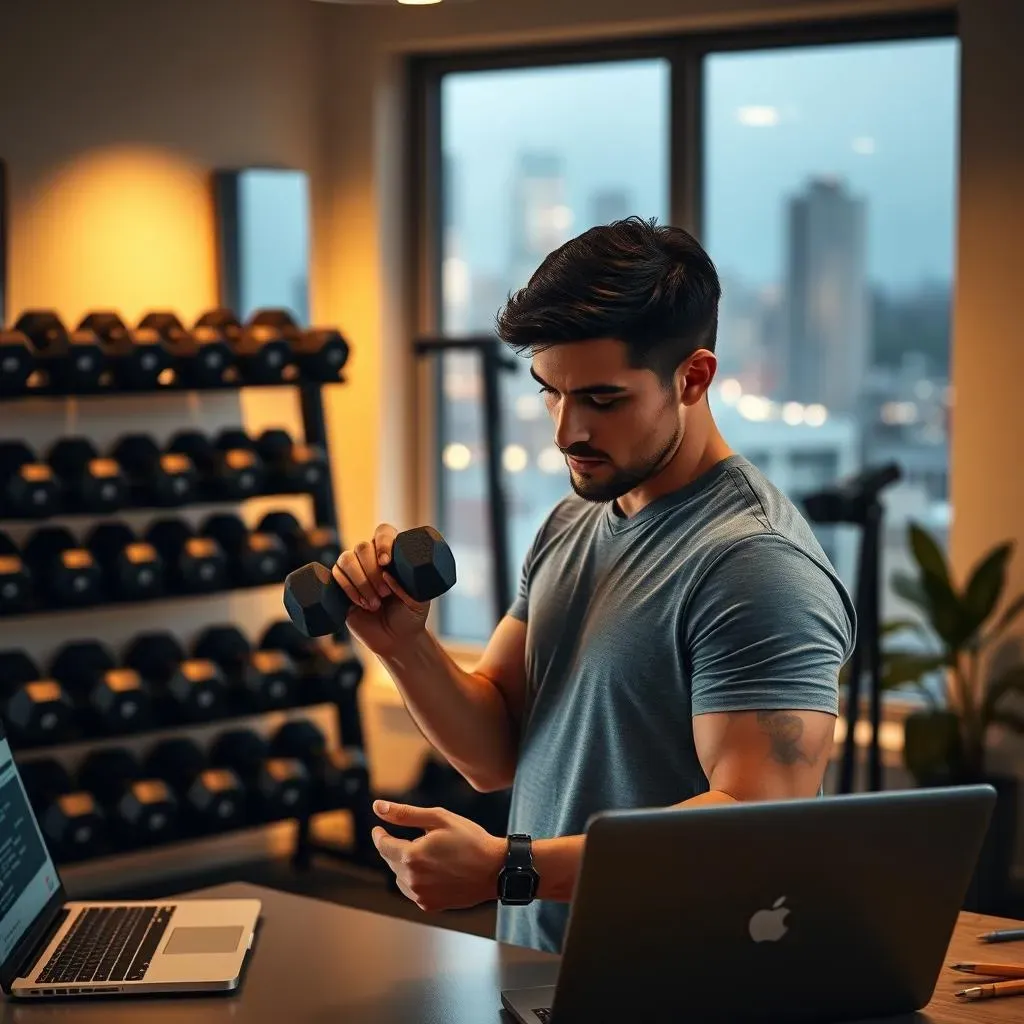
Choosing the Right Home Workout Equipment with Dumbbells
Alright, so you're ready to get some dumbbells, but where do you even start? It's like walking into a candy store, but instead of sugar, it's all about iron and steel. First, think about your fitness level. Are you just starting out, or are you a seasoned lifter? This will impact the weight range you need. Beginners might be fine with a lighter set, while more advanced folks will need heavier options. Don’t go too heavy too soon, that’s how injuries happen. I learned that the hard way, trust me. Think about what exercises you plan to do most, and get weights that will challenge you but not be so heavy that your form suffers. Also, consider your budget and the space you have available. You don't need to spend a fortune to get a great setup.
Next, look at the material. Rubber-coated dumbbells are great for protecting your floors and reducing noise, but they can be pricier. Cast iron is more affordable but can be loud and might damage your floor if you’re not careful. Neoprene is good for a softer grip, but it’s not very durable if you’re going heavy. Also, think about how the dumbbells feel in your hands. Some people prefer a thicker grip, while others like a thinner one. Try out a few different types if you can, or read reviews online to get a feel for what others are saying. The best dumbbells are the ones you'll actually use, so make sure they're comfortable and fit your needs.
Factor | Considerations |
|---|---|
Fitness Level | Beginner, intermediate, advanced |
Weight Range | Light, medium, heavy |
Material | Rubber, cast iron, neoprene |
Grip | Thickness, texture |
Budget | Affordable, mid-range, premium |
Space | Available area for storage |
Effective Home Workouts with Dumbbells
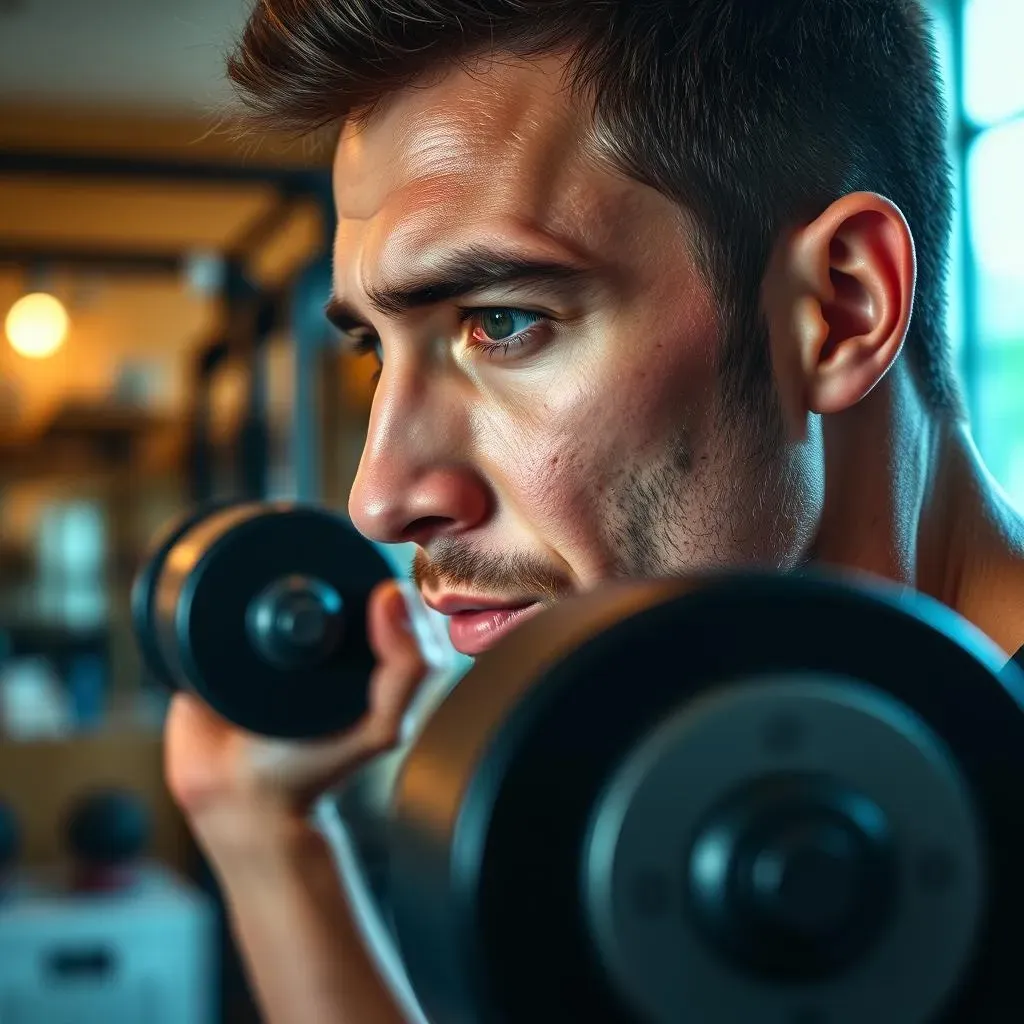
Effective Home Workouts with Dumbbells
Full Body Blast
Alright, let's get into the good stuff—actually using those dumbbells! When it comes to effective home workouts, we're not just aiming for bigger biceps, we're going for a full-body blast. Think compound exercises, the ones that work multiple muscle groups at once. For example, dumbbell squats are a fantastic way to hit your legs and glutes, while also getting your core involved. Adding a shoulder press at the top turns it into a thruster, which is a real calorie burner. I love doing these because they feel like you're getting so much done in one movement. You don't need a million different exercises, just a few good ones done well.
Another great one is the dumbbell row. This hits your back, biceps, and even your core. You can do them with one arm at a time, bracing yourself on a bench or chair, or you can do a bent-over row with both arms. And don't forget about chest presses. You can do these on the floor or on a bench if you have one. These are all classic moves for a reason, they work! Focus on proper form, not just lifting heavy weight, and you’ll see results.
Targeted Muscle Groups
Now, let's get a little more specific. If you want to target certain muscle groups, dumbbells are perfect for that. For your arms, bicep curls and triceps extensions are the go-to exercises. You can do variations like hammer curls or skullcrushers to hit different parts of your muscles. For your shoulders, lateral raises and front raises are great, and don't forget the Arnold press for a real challenge. I like to mix things up with supersets, doing a bicep exercise followed by a triceps one without rest, it's a real arm burner!
Moving on to your core, you can use dumbbells for Russian twists, side bends, and weighted planks. For your legs, lunges and step-ups are great, and you can even add weight to your calf raises. The key is to use a weight that challenges you but allows you to maintain good form. It’s better to do more reps with lighter weight than to struggle with heavy weight and risk injury. Remember, slow and controlled movements are more effective than fast and sloppy ones.
Muscle Group | Exercises |
|---|---|
Arms | Bicep curls, triceps extensions, hammer curls |
Shoulders | Lateral raises, front raises, Arnold press |
Core | Russian twists, side bends, weighted planks |
Legs | Lunges, step-ups, calf raises |
Creating a Routine
So, how do you put it all together? You don't need to overcomplicate things. Start with a warm-up, like light cardio or dynamic stretching. Then, pick 4-5 exercises that target different muscle groups. Do 3 sets of 10-12 reps for each exercise, or adjust based on your fitness level. If you're a beginner, you might start with fewer reps or sets and gradually increase as you get stronger. Don't forget about rest, it’s just as important as the workout itself. Take 60-90 seconds of rest between sets, and don't forget to cool down with some stretching at the end. I like to use a timer app to keep me on track.
Consistency is key. Aim to work out 3-4 times a week, and try to vary your exercises to keep things interesting. You can also use progressive overload, which means gradually increasing the weight, reps, or sets over time. This is what will help you see continuous results. Don't be afraid to try new things, and most importantly, listen to your body. If you're feeling pain, stop and rest. Remember, fitness is a marathon, not a sprint.
Caring for Your Dumbbell Home Workout Equipment
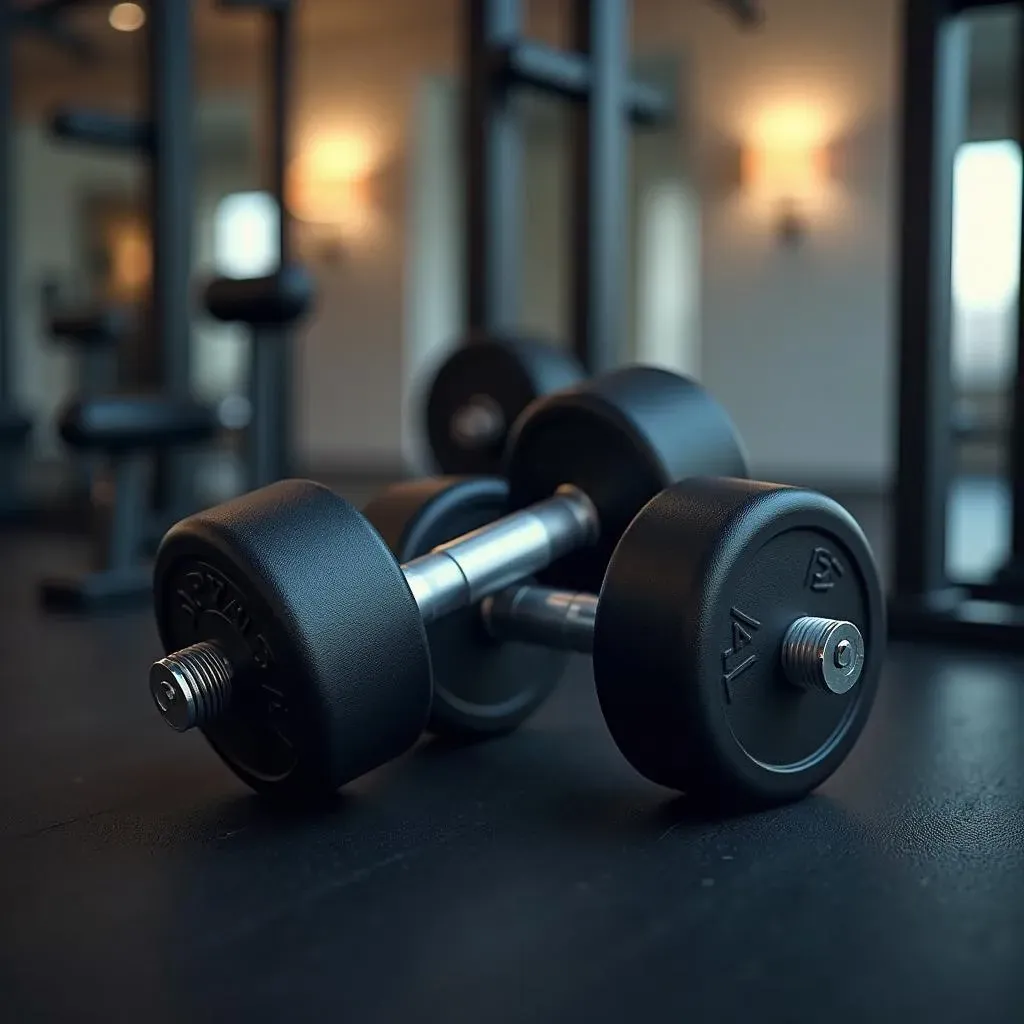
Caring for Your Dumbbell Home Workout Equipment
Cleaning Your Dumbbells
Alright, let's talk about keeping your dumbbells clean. It might seem like a small thing, but it can make a big difference in the longevity of your gear and your overall workout experience. Think about it, you're handling these weights with sweaty hands, and they're probably picking up dust from your floor. Over time, that can lead to rust or a buildup of grime. I usually give my dumbbells a quick wipe down after every workout. It only takes a minute, and it keeps them looking and feeling good. For a deeper clean, you can use a damp cloth with a little bit of mild soap. Just make sure to dry them thoroughly to avoid any rust.
Avoid using harsh chemicals or abrasive cleaners, as these can damage the coating or finish of your dumbbells. If you have rubber-coated dumbbells, pay special attention to the rubber, as it can start to crack or peel if it's not cared for properly. Also, if you have adjustable dumbbells, make sure to clean around the plates and the mechanisms, as that’s where dirt and grime can easily accumulate. A little bit of maintenance goes a long way in keeping your dumbbells in top shape.
Proper Storage
Now, where you store your dumbbells is just as important as how you clean them. You don't want to just throw them in a corner or leave them lying around on the floor. That’s a recipe for disaster, especially if you have kids or pets. Storing your dumbbells properly not only keeps them safe but also prevents damage and helps you keep your workout area organized. I like to use a dumbbell rack, it keeps everything tidy and makes it easy to grab the right weight. If you don’t have a rack, you can use a sturdy shelf or even a dedicated storage box.
The key is to keep them off the floor to prevent moisture buildup, which can cause rust. If you have rubber-coated dumbbells, storing them in a cool, dry place helps prevent the rubber from cracking or peeling. Avoid storing them in direct sunlight, as that can also cause damage. Also, make sure that the area where you store your dumbbells is clear of any obstructions, so you’re not tripping over them. Proper storage keeps your dumbbells in good condition and keeps your workout space safe and organized.
Maintenance Task | Frequency | Tools/Products |
|---|---|---|
Wipe down | After each workout | Damp cloth |
Deep clean | Monthly | Damp cloth, mild soap |
Proper storage | Always when not in use | Dumbbell rack or sturdy shelf |
Checking for Wear and Tear
Finally, make it a habit to regularly inspect your dumbbells for any signs of wear and tear. This is especially important if you use them frequently or if they're adjustable. Look for any cracks or chips in the coating, loose screws or bolts, or any other damage. If you notice anything, take action immediately. If it's a loose screw, tighten it. If there's a crack, you might need to replace the dumbbell. Ignoring small issues can lead to bigger problems down the road, and you don't want your dumbbell to fall apart mid-workout. I've had that happen before and trust me, it’s not fun, especially if you're lifting heavy.
Also, pay attention to the locking mechanisms on adjustable dumbbells. Make sure they're working properly and that the plates are secure. A loose plate can be a safety hazard. It's like a little maintenance check, just like you would do for your car, so you need to do it for your weights. Regular inspection keeps your dumbbells in safe working condition and extends their life. So, take a few minutes every now and then to check them over, it’s worth the effort.
